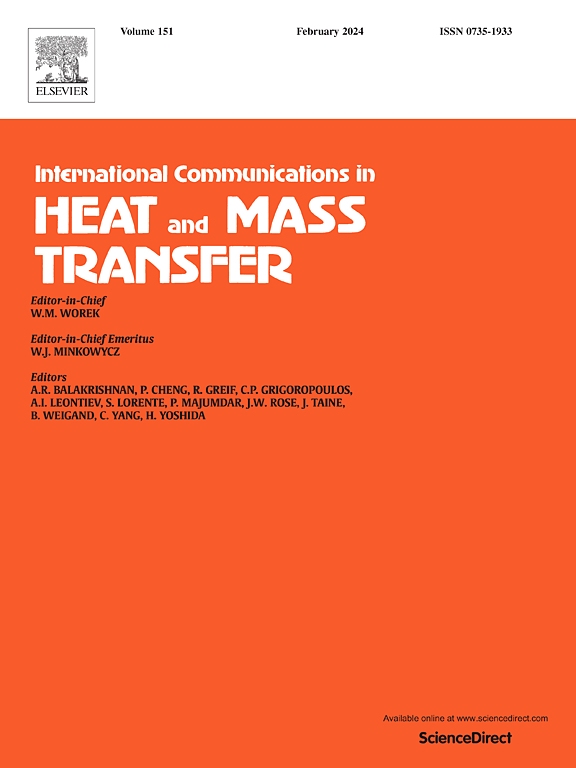Effects of spatially and temporally varied heat generation on fusion behaviors of thermoplastic composites under local thermal non-equilibrium conditions
IF 6.4
2区 工程技术
Q1 MECHANICS
International Communications in Heat and Mass Transfer
Pub Date : 2025-03-21
DOI:10.1016/j.icheatmasstransfer.2025.108884
引用次数: 0
Abstract
When thermally processing fiber reinforced thermoplastic (FRTP) composites, external fields are usually applied to generate spatially and temporally varied heat sources within composites, leading to complex local thermal non-equilibrium (LTNE) phenomena. To address this issue, a Lattice Boltzmann model is established to simulate the fusion behavior of FRTP composites at the scale of the representative elementary volume. The results show that LTNE effects on the fusion of FRTP composites are significant, especially when material has the low interfacial heat transfer coefficient. The increases in internal heat source power and matrix fraction can significantly accelerate melting rates, especially when considering LTNE effects. As compared to the situation where all parameters are at their minimum, the height of the melting region can be 15 times higher, and the height-to-width ratio of the melting region usually increases by 2–3 times. When fiber thermal conductivity increases, fusion and LTNE effects first increase and then weaken. When matrix fraction is low, increasing matrix fraction can increase temperature difference; but when it is high, it shows the opposite effect. This study provides a theoretical basis for the selection of thermal processing parameters of FRTP composites.
求助全文
约1分钟内获得全文
求助全文
来源期刊
CiteScore
11.00
自引率
10.00%
发文量
648
审稿时长
32 days
期刊介绍:
International Communications in Heat and Mass Transfer serves as a world forum for the rapid dissemination of new ideas, new measurement techniques, preliminary findings of ongoing investigations, discussions, and criticisms in the field of heat and mass transfer. Two types of manuscript will be considered for publication: communications (short reports of new work or discussions of work which has already been published) and summaries (abstracts of reports, theses or manuscripts which are too long for publication in full). Together with its companion publication, International Journal of Heat and Mass Transfer, with which it shares the same Board of Editors, this journal is read by research workers and engineers throughout the world.

 求助内容:
求助内容: 应助结果提醒方式:
应助结果提醒方式:


